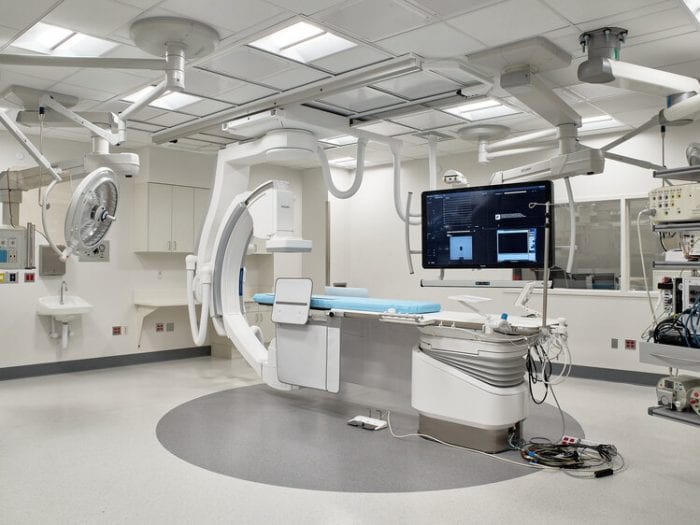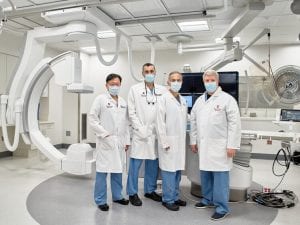Stony Brook University Hospital opens cardiac Cath/EP multifunctional lab

Stony Brook University Hospital has taken a step in offering cardiac diagnosis and treatment that is even more advanced than in the past.

Recently, the hospital announced the opening of its Cardiac Catheterization and Electrophysiology Advanced Multifunctional Laboratory in the Stony Brook University Heart Institute at SBUH. The lab consolidates comprehensive cardiac catheterization and electrophysiology services into one location.
The multifunctional laboratory measures 845 square feet to allow room for various medical teams to perform emergency procedures at the same time if needed. The room includes anesthesia equipment, state-of-the-art angiographic suite equipment and the latest electrophysiology technology. In the lab, physicians are able to continue treating a patient even if the scope of a procedure changes from minimally invasive to more invasive.
When it came time to design the multifunctional laboratory, administrative and medical professionals were able to provide input including Cath Lab Director, Dr. Robert Pyo and EP Lab Director Dr. Eric Rashba.
Pyo said it was important to get input not only from doctors but nurses and technicians, who play a crucial part in documenting procedures, information that will be used during a patient’s treatment.
Rashba said time was spent with the construction group to ensure everything was laid out correctly and that it would work for both specialties in the multifunctional lab. He added that work began April 12 to renovate five existing labs, three Cath and two EP, adjacent to the new Cath/EP lab on the main level of the Heart Institute. One lab at a time will be worked on, and while the additional renovations will take several months, Rashba said the number of patients that Stony Brook doctors can treat will increase, and patients will be able to get appointments quicker than in the past.
“What we’ve seen over time in electrophysiology is that you see more and more patients with arrhythmias that need treatment,” he said. “There’s been an incredible growth in ablation procedures, in particular atrial fibrillation. This will allow us to meet the community need with less waiting times for procedures. So, we’re looking forward to that.”
Since the lab opened March 30, both doctors said the imaging has been superior to what they had been using before. The lab includes an image-guided diagnostic and therapeutic imaging system called the Philips Azurion 7.
“We’re replacing systems that have been installed for over 10 years,” Rashba said. “First of all, we can see a lot better what the definition of the structures are we need to see, plus the radiation definition is a lot lower. So, we’re getting better imaging with less dose to the patient.”
Rashba added that some EP procedures can even be done without radiation.
Pyo said the new multifunctional lab also saves doctors precious time when treating heart patients with both catheterization and electrophysiology in the same room.
“The importance of timing, reducing the time to treatment, whether it’s minutes or seconds, is relative,” Pyo said. “I think that in any case, even in patients who come in electively, getting early diagnosis is crucial.”
Being able to respond quicker is especially crucial with treatment of heart attacks.
“Patients who are presenting with a heart attack, minutes, even seconds, count toward early diagnosis and treatment,” Pyo said, adding if patients don’t get treatment early enough they could suffer irreversible damage.






